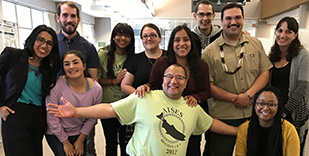Preview

Publication Date
2019
Abstract
The majority of cancer-related deaths occur as a result of metastasis of tumor cells from the site of the primary tumor to distant locations. During metastasis, tumor cells penetrate from connective tissue into the circulatory system, where they are subjected to mechanical stress due to high velocity blood flow (fluid shear stress, FSS). For metastatic tumors to form, tumor cells must survive FSS, exit circulation, and successfully colonize new locations. It had been assumed that the majority of tumor cells are eliminated by mechanical damage due to FSS, but some recent studies have revealed that many tumor cell types are able to activate signaling pathways that enable them to rapidly adapt to FSS1. Understanding the mechanisms of tumor cell resistance to FSS might enable new therapeutic strategies to disrupt the metastatic process by blocking the ability of metastatic tumor cells to survive FSS-induced mechanical damage. Because most but not all tumor cell lines examined display resistance to FSS2, we hypothesize that resistance to FSS is due to genetically selectable differences in signaling pathways that are activated in cells with intrinsic FSS resistance compared to FSS-sensitive cells. Here we will begin to test our hypothesis using MiaPaca pancreatic cancer cells, one of the rare tumor cell types we have encountered which lacks FSS resistance. We hypothesize that FSS-resistance can be reactivated in MiaPaca cells by mutagenesis followed by selection for FSS-resistant cells. To mutagenize MiaPaca cells and test our hypothesis, we have used the Sleeping Beauty transposon system. The system has two parts: the Sleeping Beauty transposase (SB) and a mutagenic transposon called pT2-Onc3. SB mediates the insertion of pT2-Onc3 at any TA-dinucleotide site in the genome (Fig.1). The pT2-Onc3 transposon can switch genes on or off, depending on where is inserted in the genome. It contains a strong promoter to drive gene expression, as well as spice donor and acceptor sequences that can disrupt gene expression or promote expression of truncated proteins (2).
Research Experience for Undergraduates (REU) Scholarship
1
Recognition
Dr. Christopher Stipp, Dr. Michael Henry, Dr. Adam Dupuy

